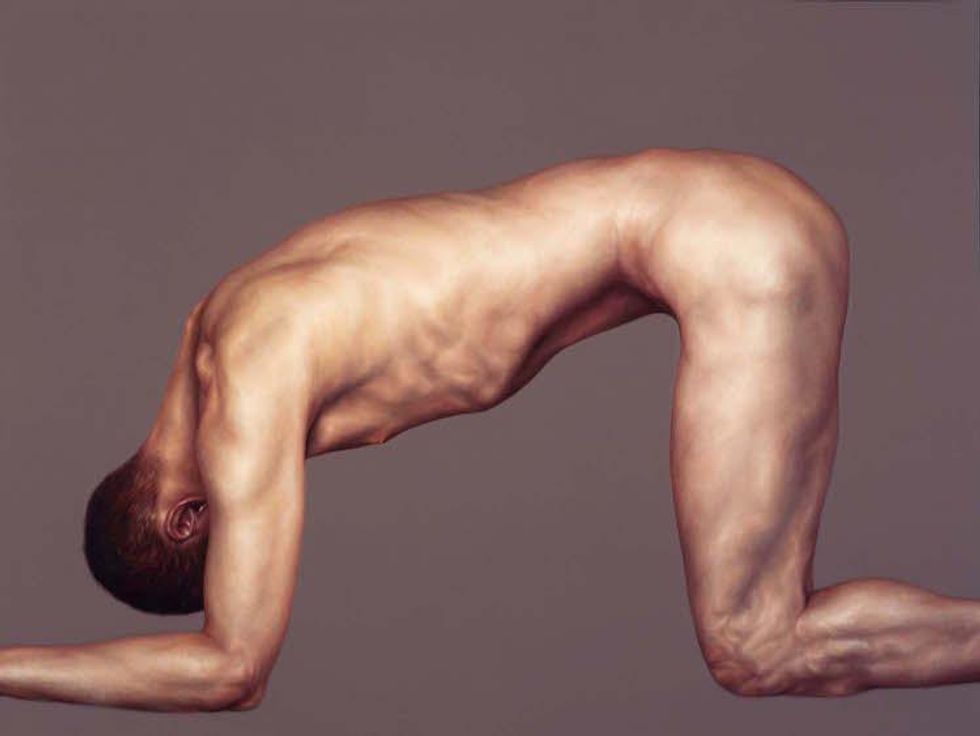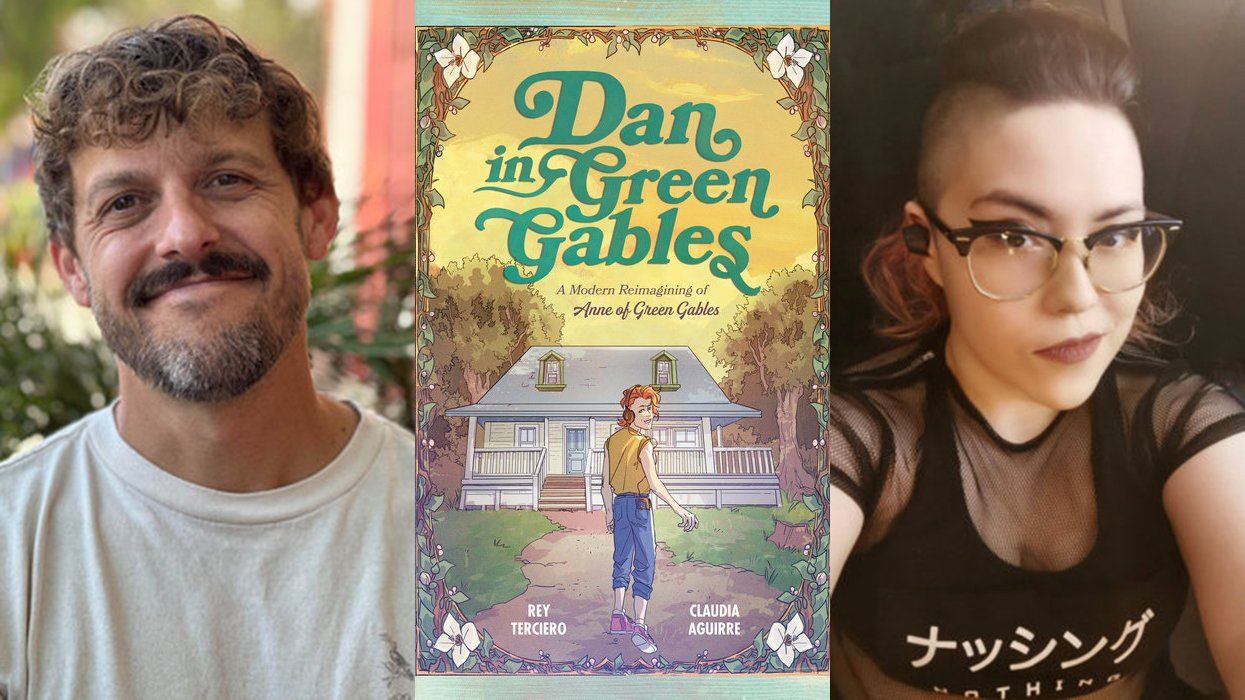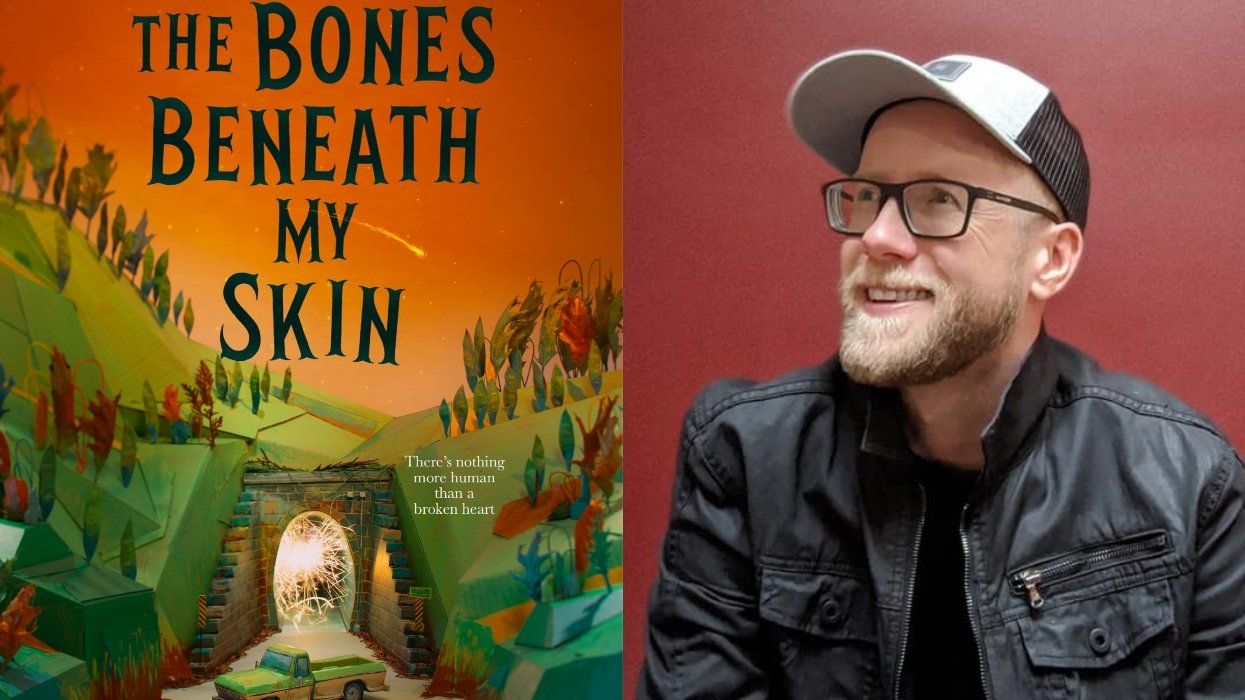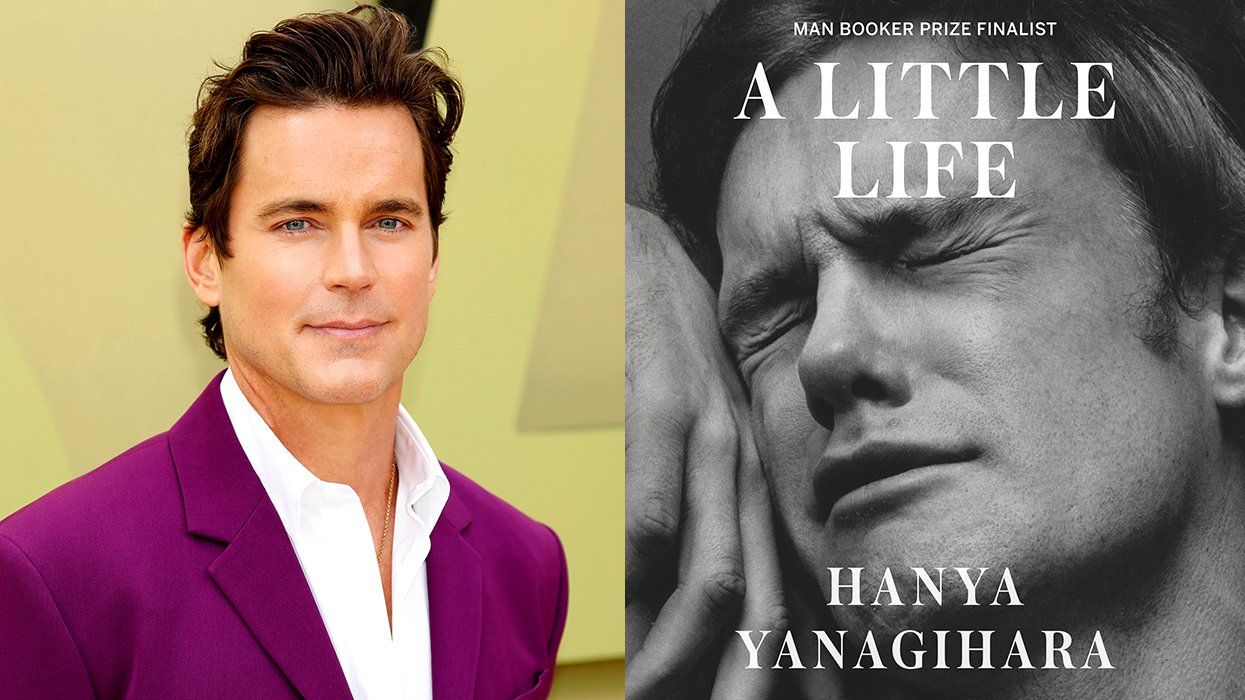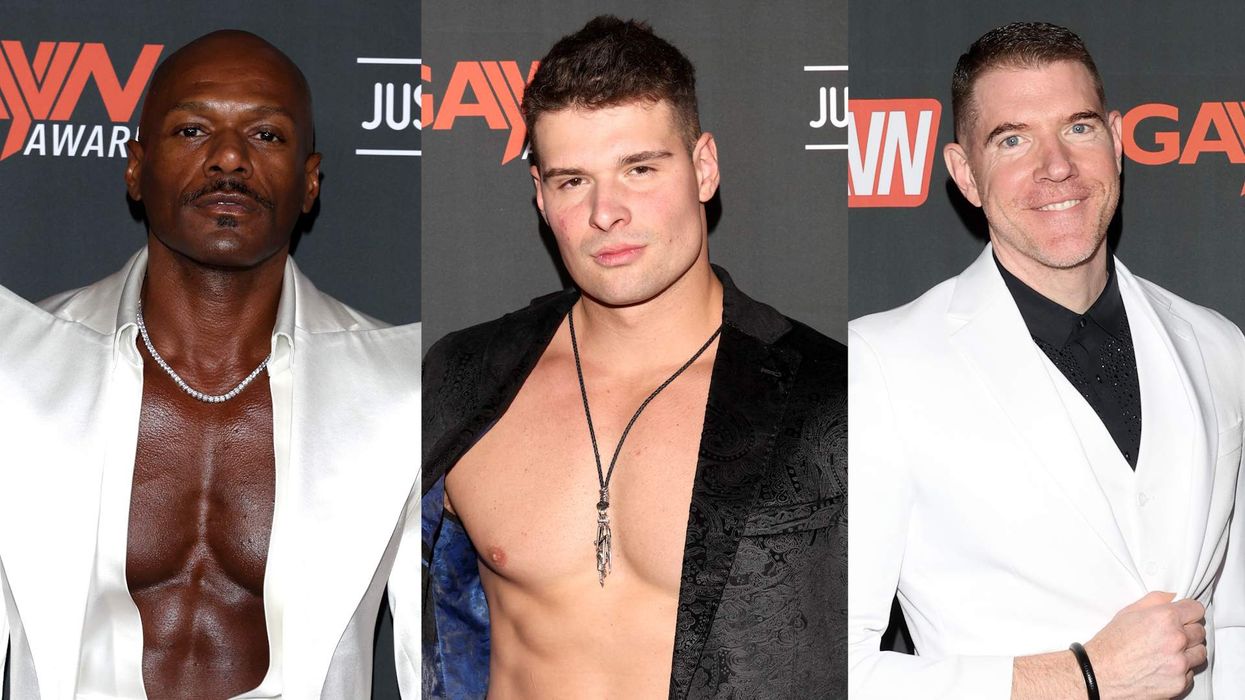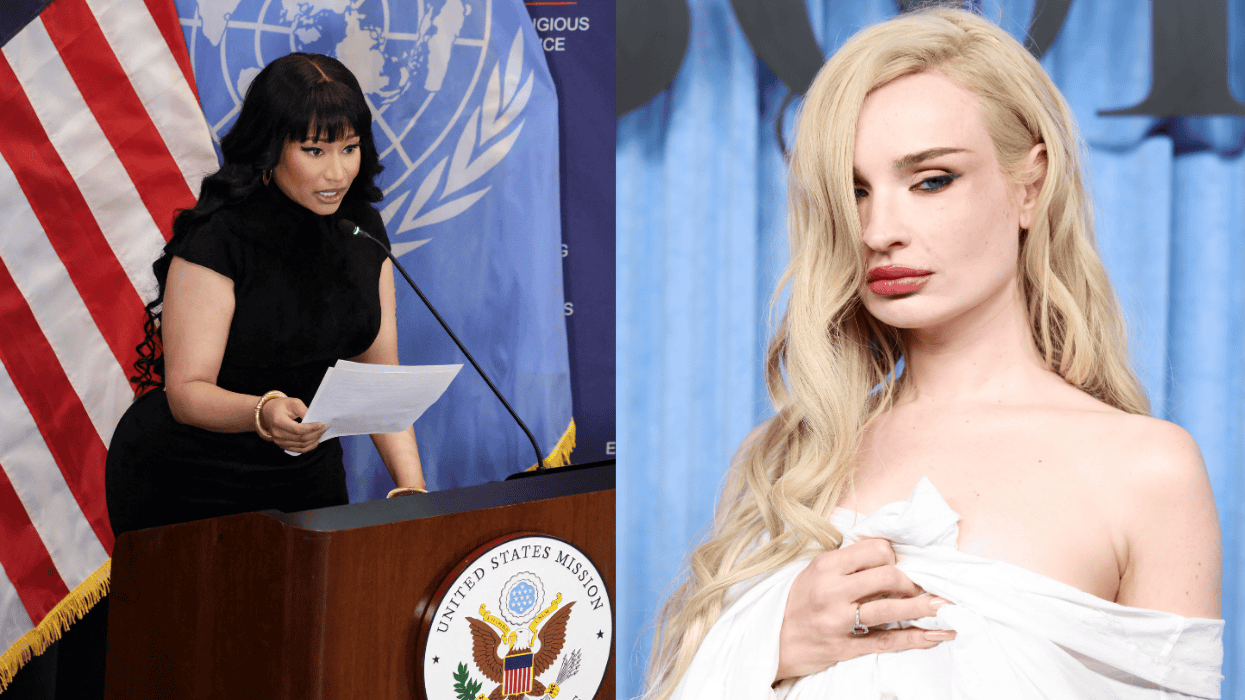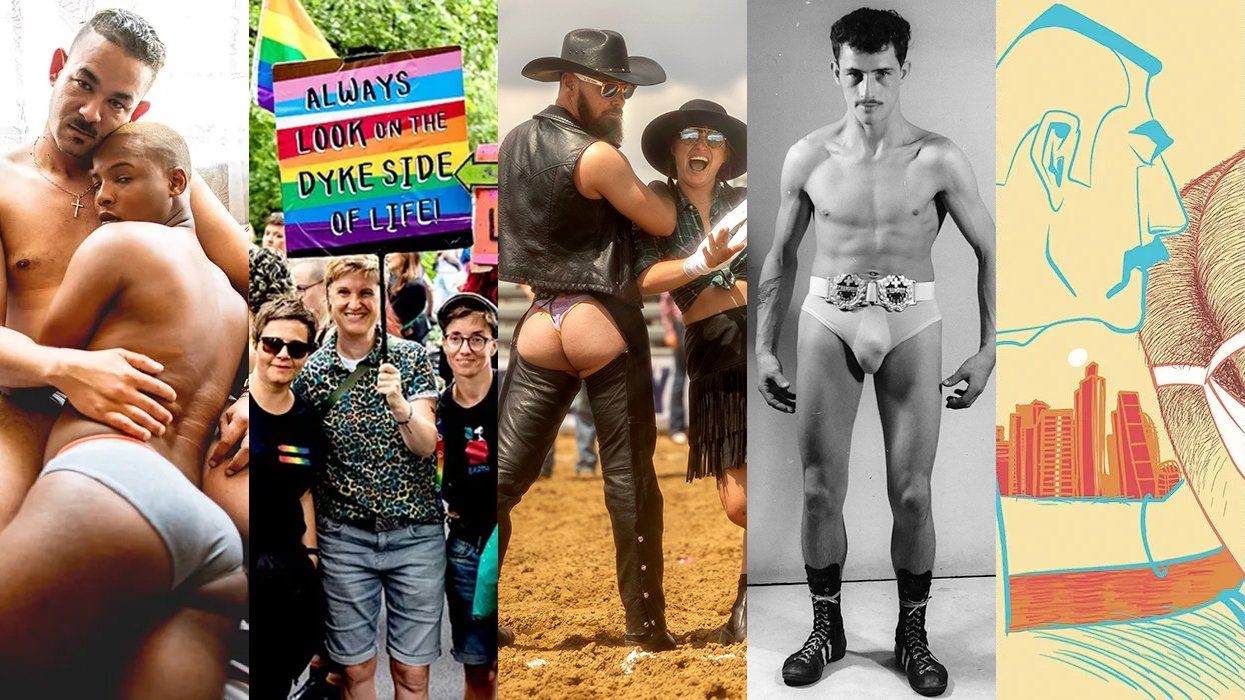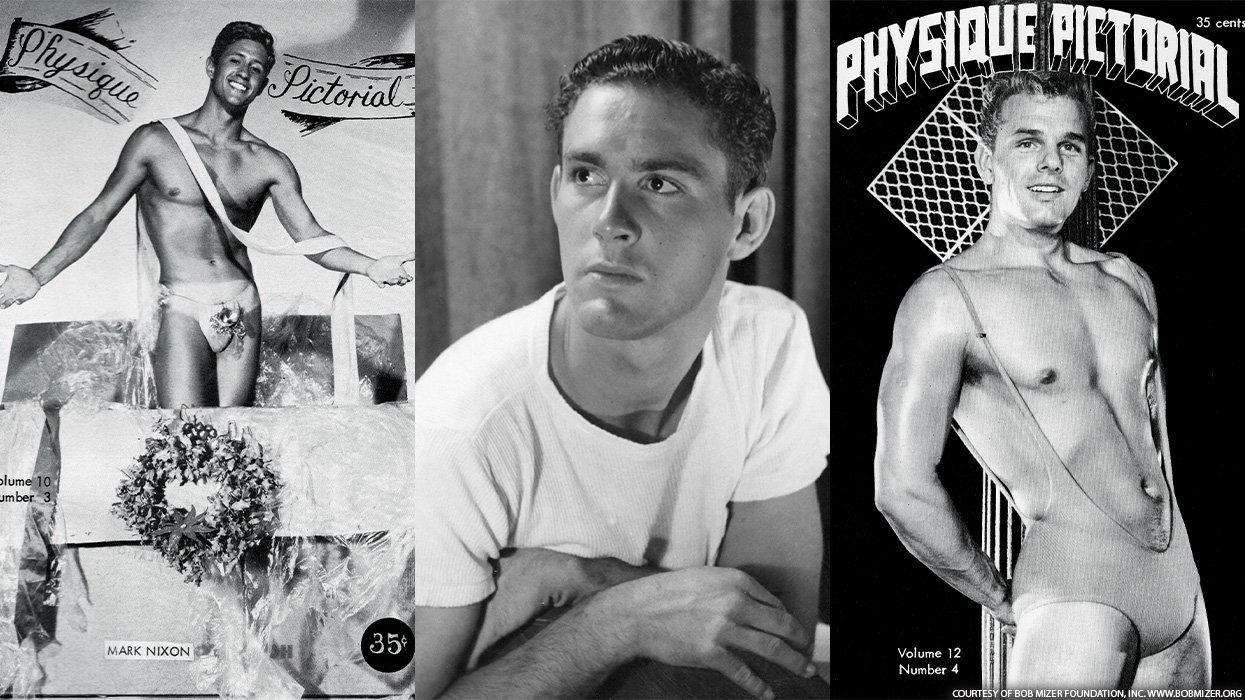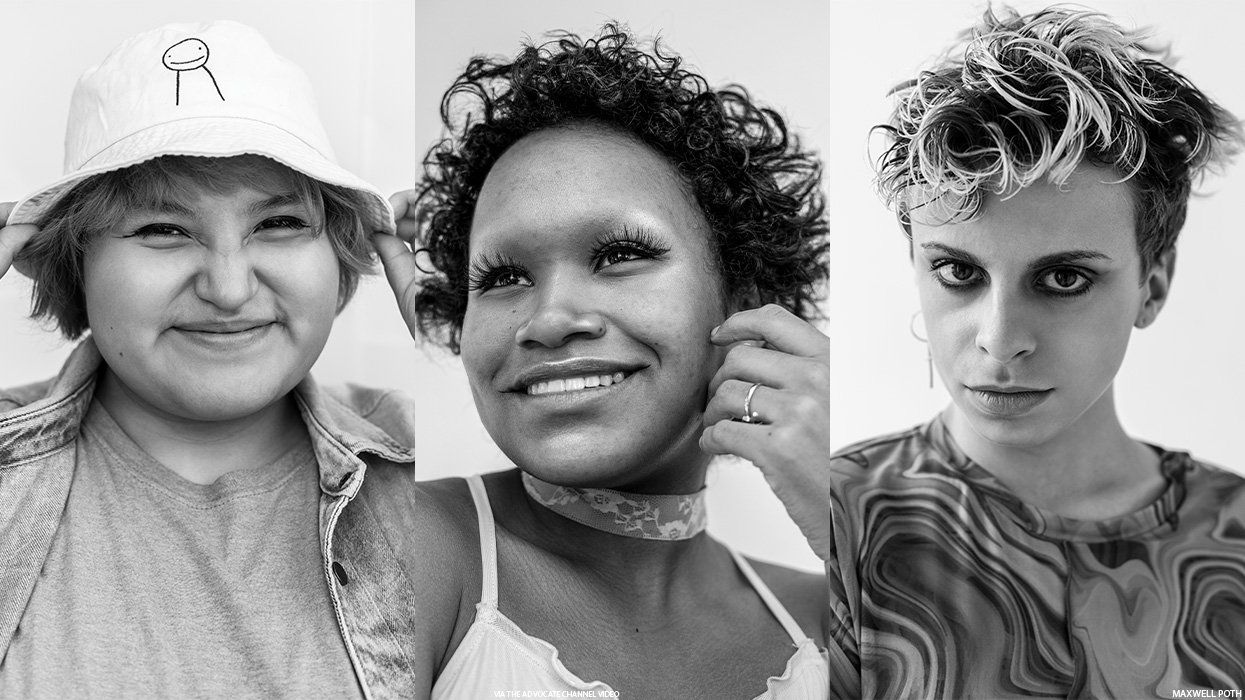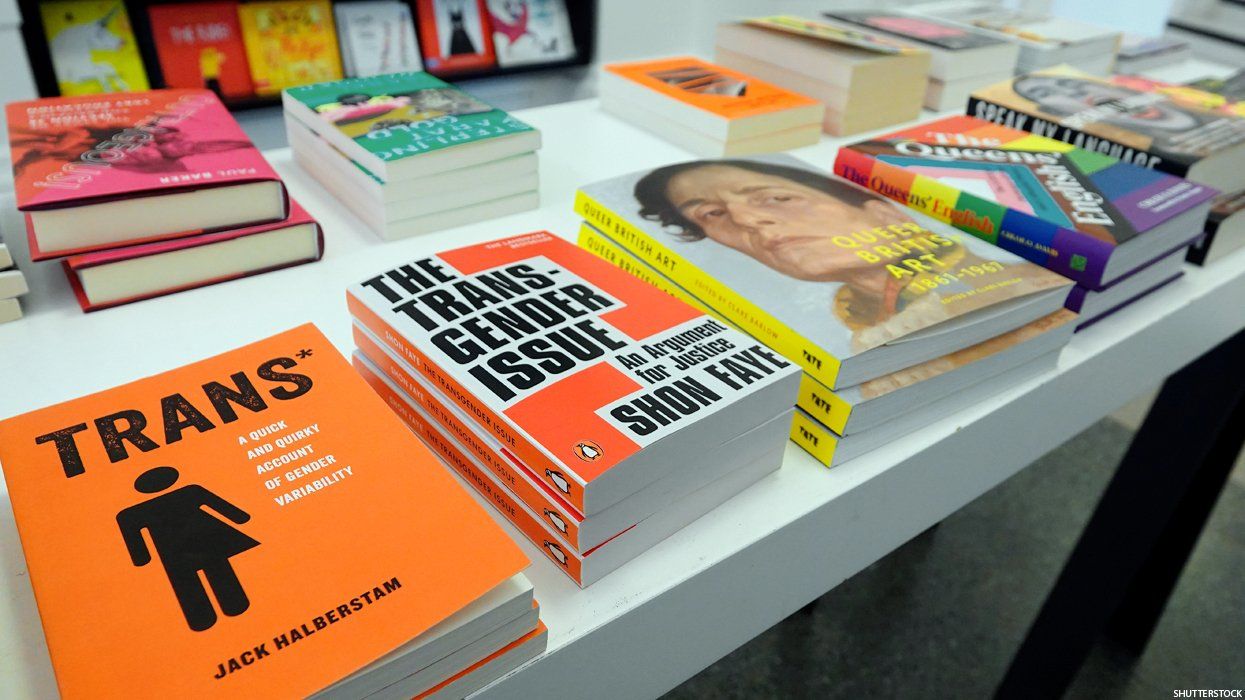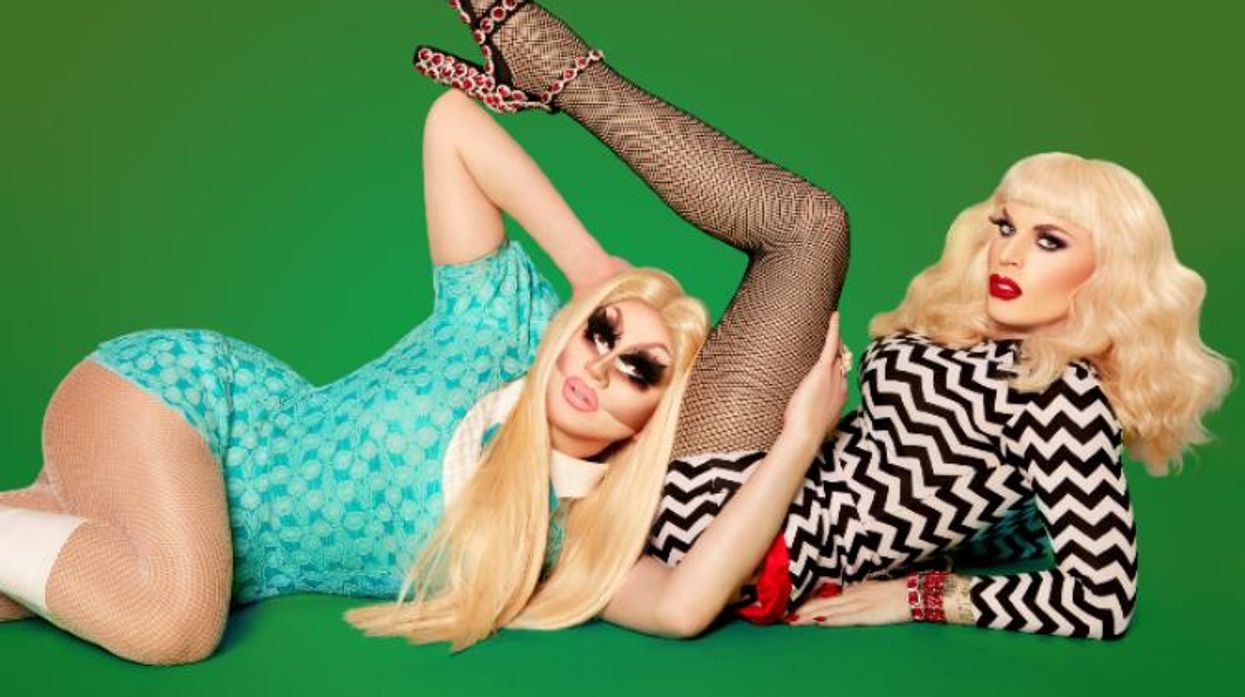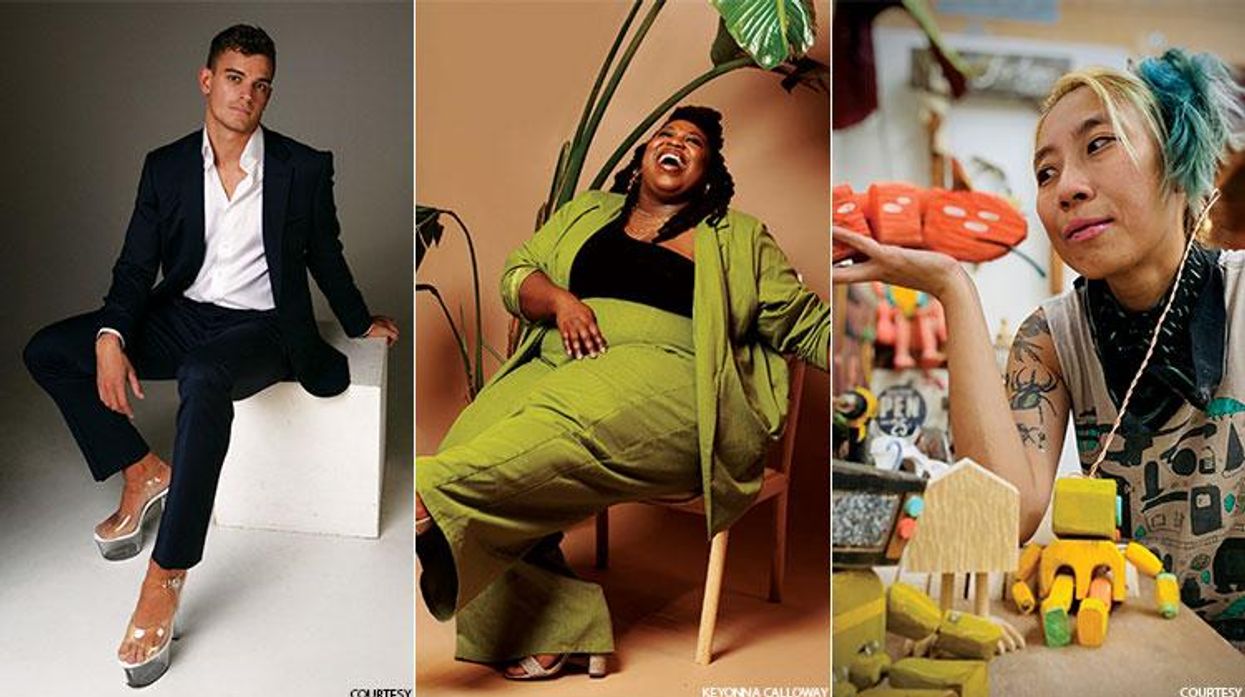Images of the male body have permeated our artistic history for thousands and thousands of years, from ancient times to today's filtered Instagrams. U.K-based painter Matthew Stradling pays homage to the masculine form in decadent oil pantings that exemplify physicality as much as they reveal tense emotion. Varying in subject and perspective, Stradling's works never fail to convey a striking story. In short, we can't help but stare.
We had the recent pleasure of chatting with Stradling about how he creates his paintings, the sentiment behind the canvas, and the liberation of the gay gaze.
SLIDESHOW: 12 Oil Paintings that Celebrate the Male Form
Let's first talk about your process. What materials do you use? How long does each piece take? What sizes are your works?
I usually start with a vague idea in my head, a theme or mood I'm trying to convey. Then I set about photographing the model. Once I select photos to work from, often using photoshop to modify the images, I do rough sketches to get the composition sorted out. I paint mostly in oil on canvas, building up layers using varnish and linseed oil. On average I would say each piece takes about a month to complete, but it's hard to tell, as I often work on a few at once. My older pieces average about four feet by five feet. The largest I have ever painted is eight feet by six feet. Recently I have been working on very small canvases, averaging six inches by 10 inches.
Where do you find inspiration?
A lot of my inspiration comes from the old masters--Michelangelo, Rubens, Botticelli, along with artists from the Decadent and Symbolist eras. There is a whole history of depictions of the male nude to draw from. I'm also greatly inspired by film, poetry, and music. Popular culture and Kitsch also inform my work, from physique magazines to Tom of Finland.
Do you ever create the entire painting from a live model?
My work can take so much time it would be unfair to make a model to sit for as long as it would be necessary to finish the piece. But the photo session can be very important in building a relationship and conveying the essence of somebody's personality.
All Fours (1997)
SLIDESHOW: 12 Oil Paintings that Celebrate the Male Form
Where did you learn how to paint?
I studied at Saint Martin's School of Art and the University of Reading in the U.K., but I was frustrated by the lack of technical advice the tutors gave, so I studied old master techniques from books, especially the techniques of Rubens. So, in some ways I am self-taught.
Who are some artists you admire?
Rubens, Warhol, Odd Nerdrum, Carravaggio, Matthew Barney, Rembrandt, Gerhardt Richter, Otto Dix, Tom of Finland.
If you could describe your work in one encapsulating sentence, what would it be?
Matthew Stradling's work delves into the realms of sex and death with delectation, making the painted flesh sparkle even as it speaks of its own fragility.
What do you hope viewers to feel when viewing your paintings?
It really depends on the piece--there is always a sense of sensuality to my work, so I guess I would hope that it is a pleasurable experience. But there is often a sense of isolation and loneliness to it, so I also hope it can express a vulnerability and compassion toward the human condition. I enjoy the thrill of placing the seductive alongside the repulsive. I guess that is like the erotic frisson.
Why has the male form caught your interest?
As a gay man, I see beauty in the male form. There is a strong erotic urge in painting the naked male. But gay men also suffer from a kind of repression when it comes to looking at the beauty of other men. I would like to liberate the gay gaze. There is such a long history of homoerotic art, but it has always had to be covered up or hidden behind religious or mythological motifs. Michelangelo's Sistine Chapel frescos are like a writhing homoerotic orgy. So I hope to reclaim the male form as a beautiful subject in art and also to reclaim all the gay artists that have depicted it in centuries before.



